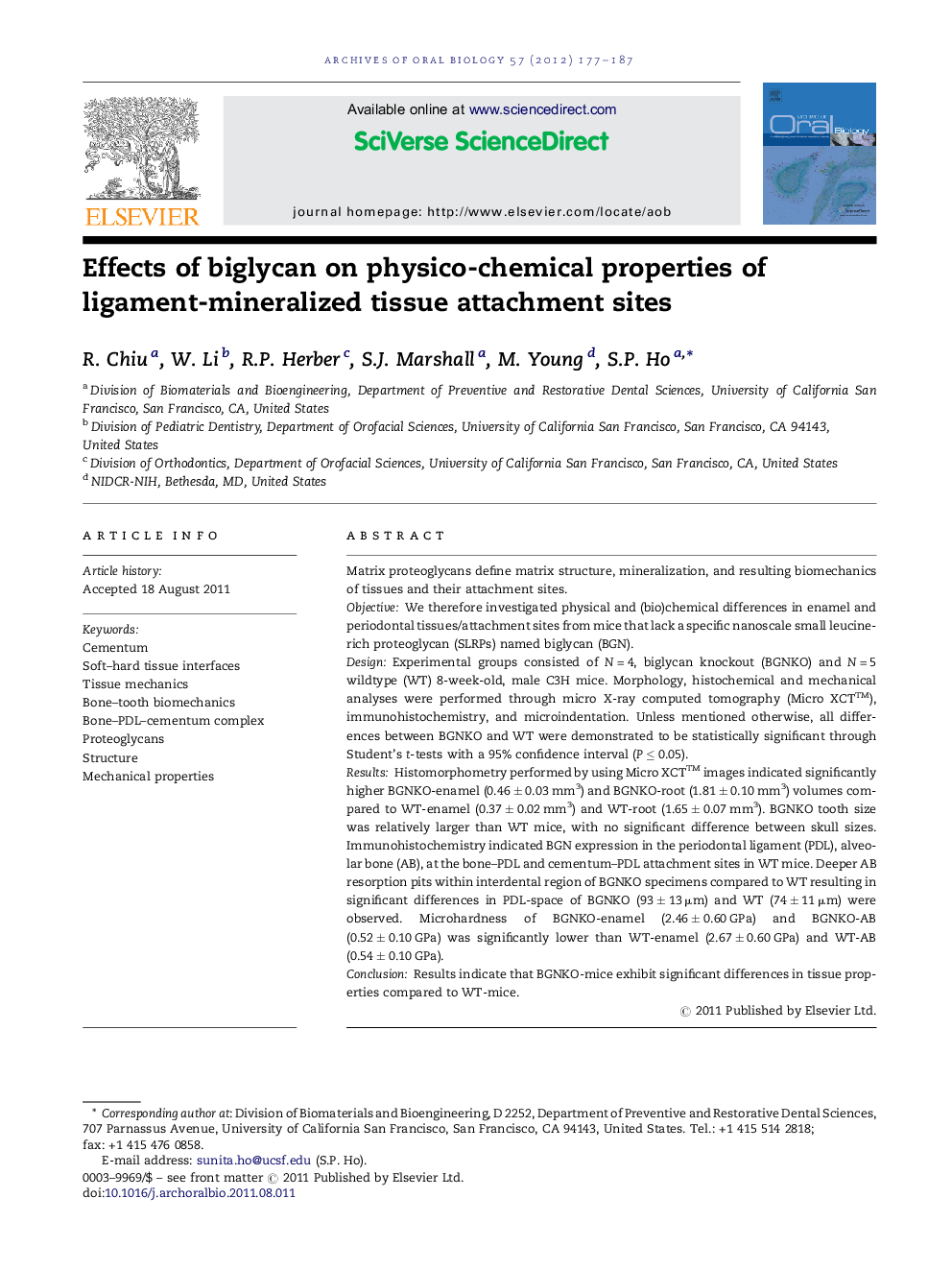| Article ID | Journal | Published Year | Pages | File Type |
|---|---|---|---|---|
| 6051947 | Archives of Oral Biology | 2012 | 11 Pages |
Matrix proteoglycans define matrix structure, mineralization, and resulting biomechanics of tissues and their attachment sites.ObjectiveWe therefore investigated physical and (bio)chemical differences in enamel and periodontal tissues/attachment sites from mice that lack a specific nanoscale small leucine-rich proteoglycan (SLRPs) named biglycan (BGN).DesignExperimental groups consisted of N = 4, biglycan knockout (BGNKO) and N = 5 wildtype (WT) 8-week-old, male C3H mice. Morphology, histochemical and mechanical analyses were performed through micro X-ray computed tomography (Micro XCTâ¢), immunohistochemistry, and microindentation. Unless mentioned otherwise, all differences between BGNKO and WT were demonstrated to be statistically significant through Student's t-tests with a 95% confidence interval (P â¤Â 0.05).ResultsHistomorphometry performed by using Micro XCT⢠images indicated significantly higher BGNKO-enamel (0.46 ± 0.03 mm3) and BGNKO-root (1.81 ± 0.10 mm3) volumes compared to WT-enamel (0.37 ± 0.02 mm3) and WT-root (1.65 ± 0.07 mm3). BGNKO tooth size was relatively larger than WT mice, with no significant difference between skull sizes. Immunohistochemistry indicated BGN expression in the periodontal ligament (PDL), alveolar bone (AB), at the bone-PDL and cementum-PDL attachment sites in WT mice. Deeper AB resorption pits within interdental region of BGNKO specimens compared to WT resulting in significant differences in PDL-space of BGNKO (93 ± 13 μm) and WT (74 ± 11 μm) were observed. Microhardness of BGNKO-enamel (2.46 ± 0.60 GPa) and BGNKO-AB (0.52 ± 0.10 GPa) was significantly lower than WT-enamel (2.67 ± 0.60 GPa) and WT-AB (0.54 ± 0.10 GPa).ConclusionResults indicate that BGNKO-mice exhibit significant differences in tissue properties compared to WT-mice.
